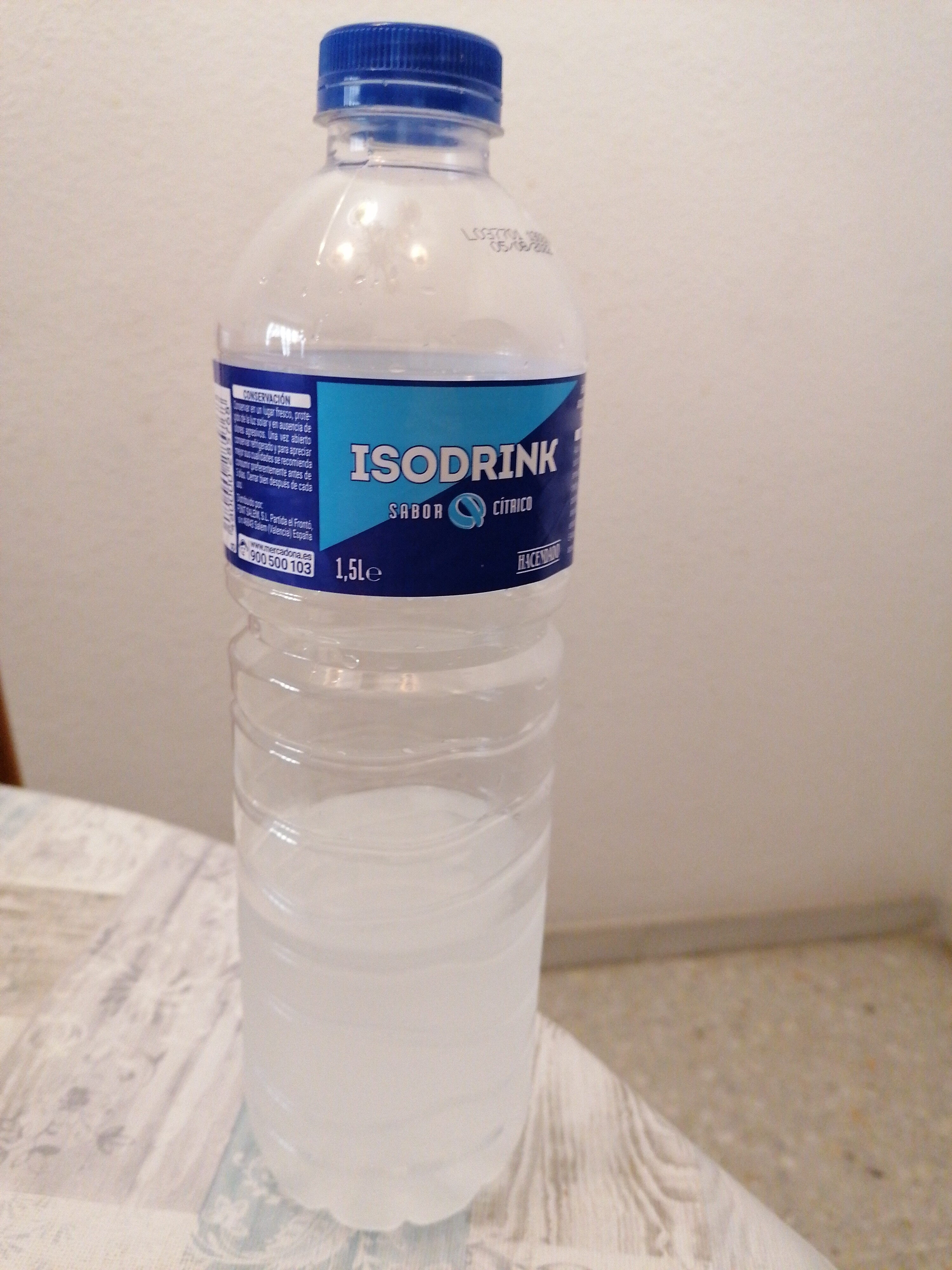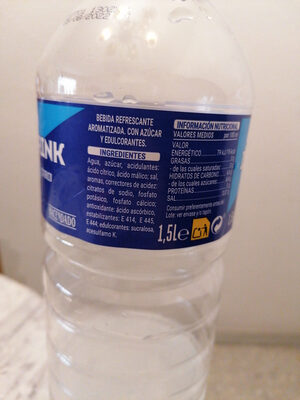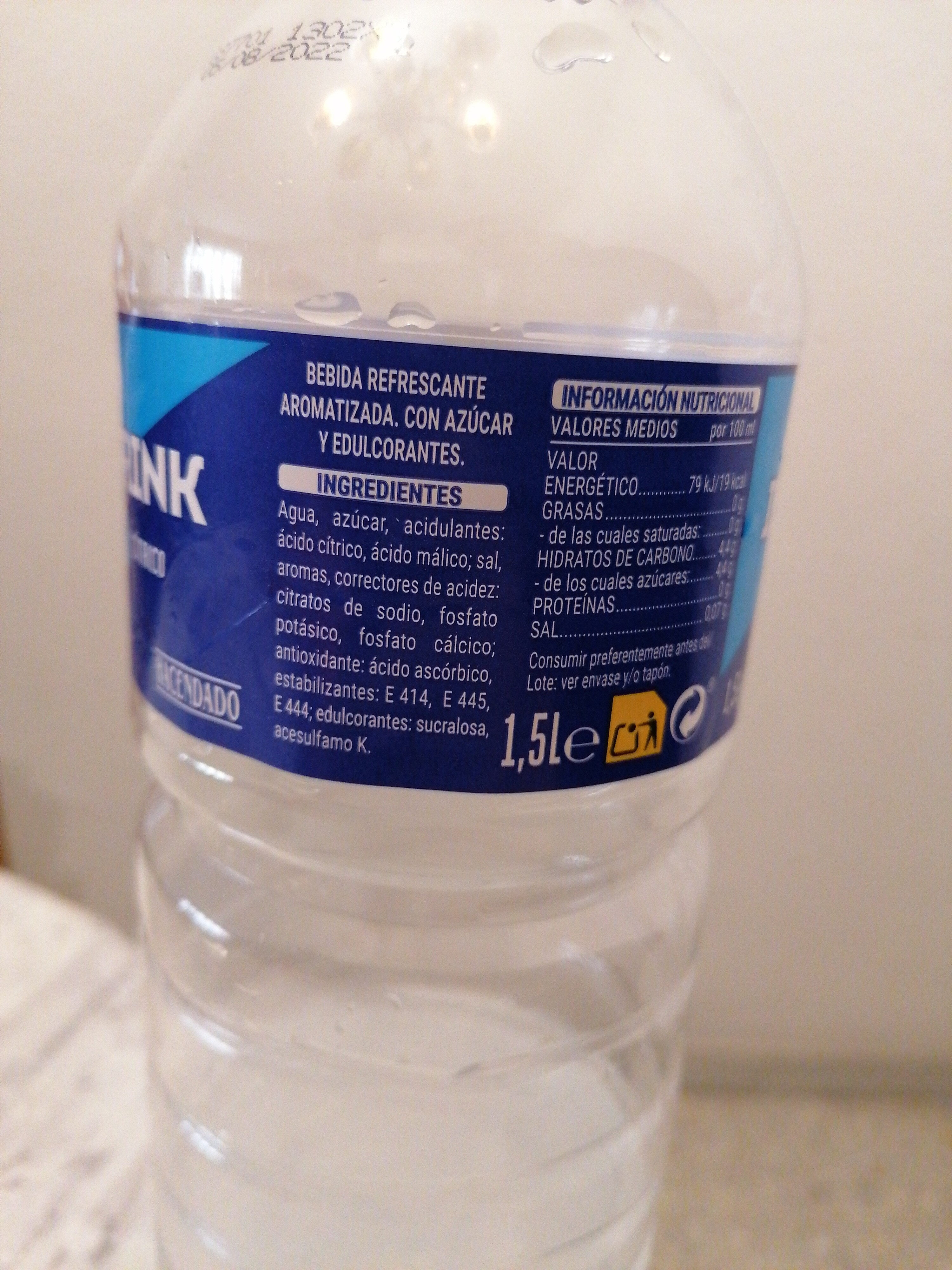Bebida Isotonica - Hacendado - 1,5 l
Aquesta pàgina del producte no està completa. Podeu ajudar a completar-la editant-la i afegint-hi més dades a partir de les fotos ja disponibles, o fent-ne més amb l'aplicació de androide o iPhone / iPad. Gràcies!
×
Codi de barres: 8480000285768 (EAN / EAN-13)
Nom comú: Bebida refrescante aromatizada, con azúcar y edulcorantes
Quantitat: 1,5 l
Empaquetament: es:Green dot
Marques: Hacendado
Categories: Begudes, Begudes ensucrades artificialment, en:Diet beverages, en:Energy drinks, Begudes esportives
Etiquetes, certificacions, premis:
Punt verd, Amb edulcorants
Botigues: Mercadona, Hacendado
Països on es va vendre: Espanya
Matching with your preferences
Entorn
Empaquetament
Transport
Report a problem
Fonts de dades
Producte afegit per kiliweb
Última modificació de la pàgina del producte per inf.
La pàgina del producte, també editada per alia, ecoscore-impact-estimator, musarana, openfoodfacts-contributors, roboto-app, yuka.ZnBrdU9mMEZ1dlltcC9jdzFCaUYydEZwL3BUd0JGSzNPOUFhSVE9PQ, yuka.sY2b0xO6T85zoF3NwEKvlkBMQ_TViBbqHBf5kByU5PCIF6DFcchvxIv9bqo.








